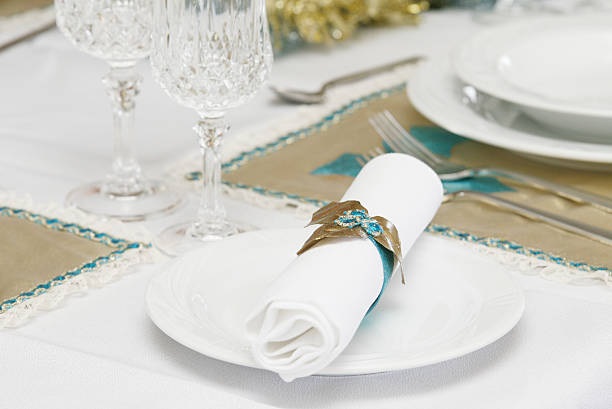There is something special about gathering around a table for a meal. Whether it’s a simple weekday dinner or a grand holiday feast, the experience can be elevated by setting a beautiful table.
It’s not just about the aesthetics; the way you set the table can also contribute to the overall ambiance of the meal.
In this article, we’ll explore the art of setting a dining table and share some tips on how to make your next meal a memorable one.
Why Does Table Setting Matter?
The act of setting the table is more than just putting down plates and utensils. It shows care and thoughtfulness to your guests, making them feel valued and appreciated.
A well-set table can also set the tone for the meal, creating a warm and inviting atmosphere that encourages conversation and relaxation.
Additionally, a well-planned table can enhance the overall dining experience by making the food look more appealing.
Table Setting Essentials
Before we dive into the details, let’s first go over the basic elements of a table setting. These are the essential items that you’ll need regardless of the occasion:
Plates
Start with a dinner plate as the base of your setting. If you’re serving multiple courses, you may also need a salad plate, a bread plate, and a dessert plate.
Table
When setting the table, it is important to ensure that it can accommodate the number of guests you will be hosting.
If you have four guests, a 4-seater table will suffice, but if you have six guests, a 6-seater table is a better option.
An extendable table can be useful if you have a varying number of guests, while a round table can create a more intimate atmosphere.
Ultimately, choosing the right table for your needs can enhance the overall dining experience for you and your guests.
Utensils
Set the utensils in the order they will be used, starting from the outside and working inward.
The forks go on the left, with the salad fork on the outside, and the knives and spoons go on the right, with the blade of the knife facing the plate.
Glassware
At a minimum, you’ll need a water glass and a wine glass. If you’re serving multiple types of wine, you may also want to include a separate glass for each.
Napkins

Place the napkin either on the plate or to the left of the forks.
Centrepiece
This is optional, but a centrepiece can add an extra touch of elegance to your table. Choose something that complements the theme or season, such as flowers, candles, or a decorative bowl.
Table Setting Details
Now that we have the essentials covered, let’s move on to the finer details. These are the elements that can take your table setting to the next level:
Tablecloth
A tablecloth can instantly transform a plain table into an elegant one. Choose a fabric that complements the occasion, such as linen for a formal dinner or cotton for a casual brunch.
Chargers
Chargers are decorative plates that go underneath the dinner plate. They can be used to add colour, texture, or pattern to your table.
Place cards
If you’re hosting a formal event, place cards can help guests find their seats and add a personalised touch to the table.
Flatware
Don’t be afraid to mix and match flatware styles to create a unique look. You can also add a special touch by tying a ribbon or piece of twine around the utensils.
Glassware Accessories
If you want to take your glassware to the next level, consider adding accessories such as wine charms, decorative stirrers, or custom coasters.
FAQs:
What is the correct placement of utensils in a table setting?
As mentioned earlier, the utensils should be set in the order they will be used, starting from the outside and working inward.
The forks go on the left, with the salad fork on the outside, and the knives and spoons go on the right, with the blade of the knife facing the plate.
Should the napkin be folded or placed in a napkin ring?
Either option is acceptable, but folding the napkin can create a more formal and elegant look, while using a napkin ring can add a personal touch.
Do I need a centrepiece for every occasion?
A centrepiece is optional and not necessary for every occasion. However, it can add an extra touch of elegance to your table and create a focal point for your guests.
Can I use paper napkins instead of cloth napkins?
While cloth napkins are more formal and elegant, paper napkins can be used for more casual occasions. Just make sure to choose a quality paper napkin that complements your table setting.
Summary
Setting a beautiful table can elevate any meal and create a warm and inviting atmosphere for your guests.
With the right elements and attention to detail, you can create a table setting that not only looks beautiful but also enhances the overall dining experience.
Whether it’s a casual brunch or a formal dinner, the art of setting a dining table is all about creating a welcoming and memorable experience for your guests.

